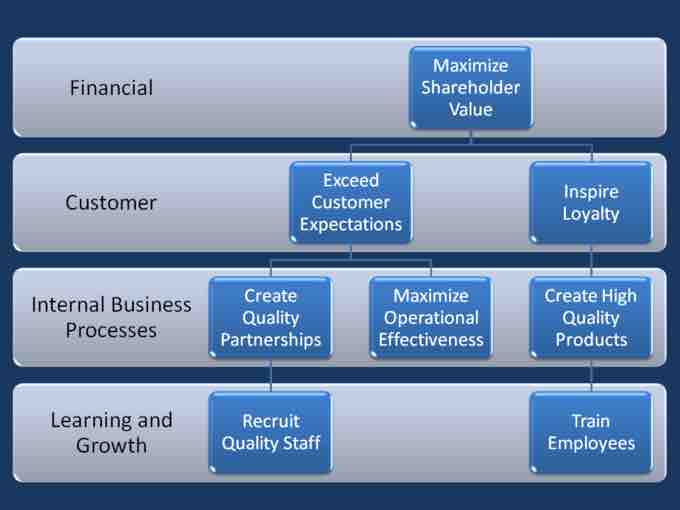Objectives
A goal (or objective) is a desired result an individual or organization envisions, plans and commits to achieve—a personal or organizational desired end-point in some sort of assumed development. Organizationally, goal management consists of the process of recognizing or inferring goals of individual team-members, abandoning no longer relevant goals, identifying and resolving conflicts among goals, and prioritizing goals consistently for optimal team-collaboration and effective operations.
Strategy is an ongoing process that develops both long-term and short-term objectives at the strategic and operational levels, establishes and/or modifies the organizational hierarchy to manage operational processes, and determines the suitability, feasibility and acceptability of the strategy

Objectives
This strategy map shows high level strategic groupings and objectives in the linked boxes.
Setting Objectives
One model of organizing objectives uses hierarchies. The items listed may be organized in a hierarchy of means and ends and numbered as follows: Top Rank Objective (TRO), Second Rank Objective, Third Rank Objective, etc. From any rank, the objective in a lower rank answers to the question "How? " and the objective in a higher rank answers to the question "Why? " The exception is the Top Rank Objective (TRO): there is no answer to the "Why? " question. That is how the TRO is defined.
People typically have several goals at the same time. "Goal congruency" refers to how well the goals combine with each other. Does goal A appear compatible with goal B? Do they fit together to form a unified strategy? "Goal hierarchy" consists of the nesting of one or more goals within other goal(s).
One approach recommends having short-term goals, medium-term goals, and long-term goals. In this model, one can expect to attain short-term goals fairly easily: they stand just slightly above one's reach. At the other extreme, long-term goals appear very difficult, almost impossible to attain. Strategic management jargon sometimes refers to "Big Hairy Audacious Goals" (BHAGs) in this context. Using one goal as a stepping stone to the next involves goal sequencing. A person or group starts by attaining the easy short-term goals, then steps up to the medium-term, then to the long-term goals. Goal sequencing can create a "goal stairway. " In an organizational setting, the organization may co-ordinate goals so that they do not conflict with each other. The goals of one part of the organization should mesh compatibly with those of other parts of the organization and be easily translatable into action plans.